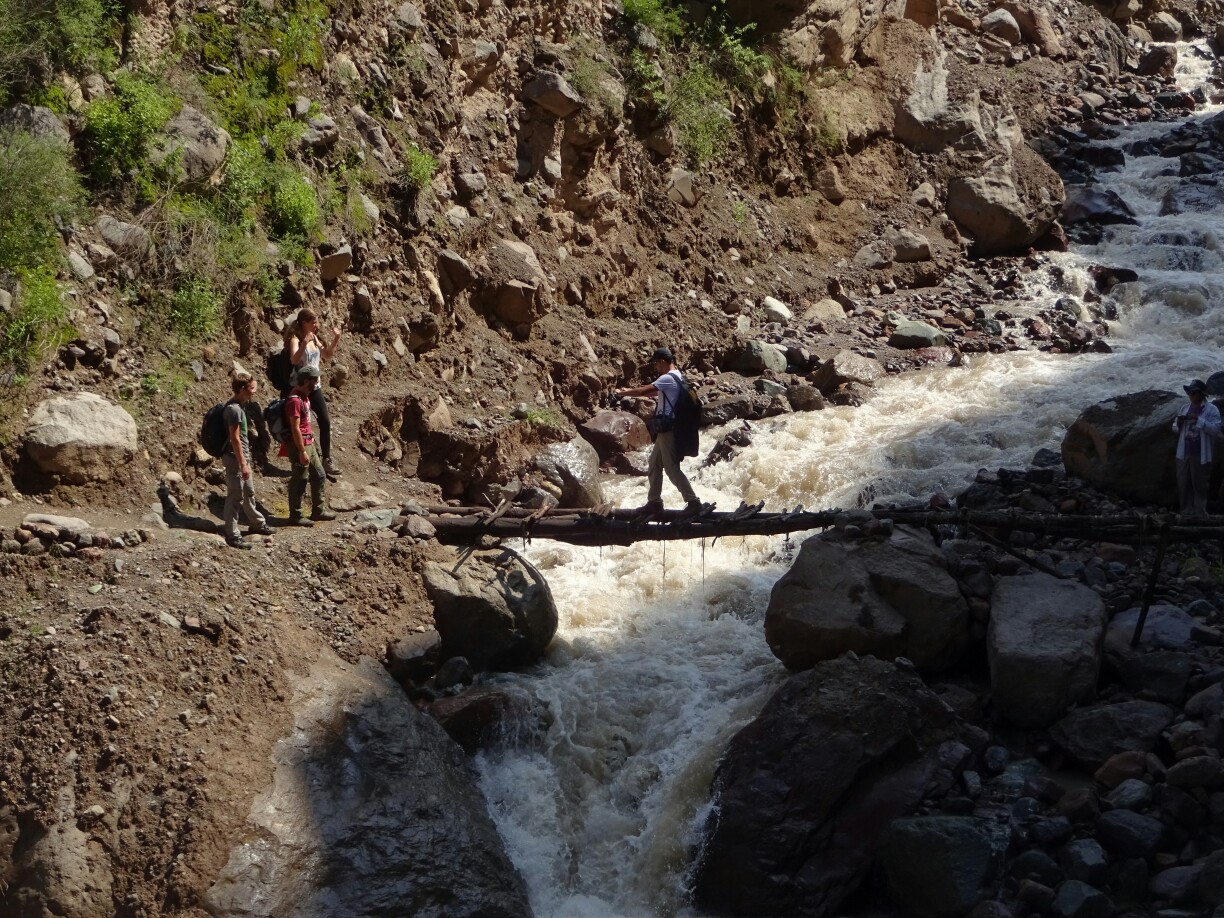Bastian and I arrived in Arequipa, Peru, in the late afternoon and decided to go on a tour to the “Colca Canyon”, which would start the next day. The canyon is the second deepest canyon in the world and is located a few hours north-west of Arequipa. Without much sleep we got picked up at 3 a.m. the next morning. After driving all around town to pick up the other people, the bus took us to Chivay for some breakfast.

Not too far down the road we stopped at the “Cruz del Condor”, the condor’s cross, a popular spot for watching these majestic birds. But that day we could only see tourists, not condors at this viewpoint. As our tour guide Jean-Carlos explained, most condors migrate to the ocean during the rainy season to feed on the placentas of seals and sea lions, after they gave birth to their offspring.


Close to Cabanaconde we started our descend. We seemed to be the last group for that day and soon we were all alone. Not far down the trail we paused, as we had seen large birds circling below us. As they got a little closer, we could make out the distinctive white coloring on top of their wings, telling us that they were condors. It was an awesome feeling to see four of those majestic birds all on our own as they seemed to own the canyon. At that moment it felt like “Condor Canyon” would be a more appropriate name.


We continued our descend and were happy to reach the bridge across the river after losing 1100m of elevation while constantly hiking downhill. The suspension bridge across the fierce brown waters was in much better condition than on the “Inca Jungle Trek” and we reached the other side without a problem. A few minutes later we had reached our accommodation for that night.


However, all further hiking plans were abandoned as it started raining during our lunch break. Instead Alice and Alessandro (Italy), Remy and Manon (France), Madalina (Romania), and Bastian and I (Germany) discussed European politics until nightfall, when dinner was served and the rain finally stopped. Unfortunately, Nelson (Chile) and Jean-Carlos (Peru) were too tired to join the conversation for some non-European views on the issues.


After a good night of sleep, we woke up to beautiful sunshine and a bright blue sky. With a delicious pancake breakfast, everyone was ready to tackle the day’s hike. As we walked through the canyon, following the river downstream, we learned about the different fruits and plants that are grown here. We also learned about the little man-made caves, where the native people would store their seeds for the next seeding period or just to hide them from the Spaniards. These caves are called “colca” and gave the canyon its name – “Colca Canyon”.


Around noon we started to pick up cactus fruits as dessert after lunch. By the time we had filled our bag, we had crossed the river once again. On the other side of the river, elevated and in a riverbend lay a small oasis, which must be even more impressive during the dry season, when the rest of the canyon is brown and dry. To us it was still a little paradise with sunshine, swimming pool and free delicious mangos right from the tree.


In the afternoon we met Alex, a 19 year old guy traveling through Peru all on his own. A few days before he had bought a live guinea pig, as he wanted to try this Peruvian specialty. He had been looking for people to share it with and we were willing to pitch in. The former owner had told him exactly how to kill, skin, gut and prepare the animal, but we were still happy for the two Gauchos that Alex was staying with, who helped us with everything and knew exactly what they were doing.

Luckily we were able to use the kitchen of our hostal after the regular dinner was served. We seasoned and fried the guinea pig and had it with rice and yucca as our second dinner. To me it wasn’t tasting like much and it had way to many bones for the little amount of meat that was on it. It was definitely a very interesting experience, but I wouldn’t order another guinea pig in a restaurant. Nevertheless, it added another nickname to the canyon – “Cuy Canyon”, which is Spanish for guinea pig.


The next morning we had to get up before sunrise once again. For the next two and a half hours we climbed back up to Cabanaconde. Along the way we could have hopped on one of the “live taxis”, that take supplies down into the canyon and come back up with an empty saddle, but all of us made it without additional help. By the end we were still happy to get some breakfast, which we had been waiting for since 4:30 a.m.


On our way back to Arequipa we stopped for a view of the “Colca Valley”, which is upstream from the canyon and much wider. Afterwards we visited the hot springs right by the riverside to relax our muscles for a bit. Together with another stop at 4900m, the highest point along our route, and one more for some llama-selfies, this day was also pretty action-filled and all in all we were quite happy with the value of this trip.


